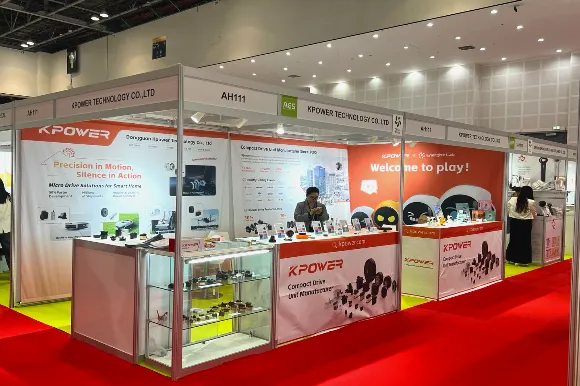Unlocking the Power of Servo Motor Speed Control: An Essential Guide for Modern Automation
In an era where automation reigns supreme, the ability to control motor speed precisely and reliably has become a cornerstone of technological advancement. Among the myriad of motor types, servo motors stand out due to their incredible accuracy and flexibility—making them the backbone of modern robotics, CNC machinery, drone stabilization, and industrial automation. But what truly elevates their performance is the art and science of servo motor speed control.

At its core, a servo motor is a compact, high-performance electric motor equipped with a feedback sensor—usually an encoder or a potentiometer—that continuously monitors its output position or speed. This feedback creates a closed-loop system, allowing precise adjustments that ensure the motor performs exactly as desired. Unlike simple motors that run at a fixed speed or under open-loop control, servo motors can dynamically change speeds and positions, unlocking endless possibilities for intricate tasks.
Understanding the Basics: How Servo Motor Speed Control Works
Implementing speed control over a servo motor involves integrating electronic circuitry with control algorithms. The most common approach employs a PID (Proportional-Integral-Derivative) controller, which compares the intended speed with the actual speed and makes real-time adjustments. When the system detects a discrepancy—say, the motor is slower than needed—it sends corrective signals to the motor driver to accelerate, and vice versa.
This continuous feedback loop allows for incredibly smooth variations in motor speed, enabling robots to handle delicate manipulations or high-precision assembly tasks. For example, in robotic arms assembling tiny electronic components, the ability to precisely control brushing or rotational speed can make the difference between success and failure.
Electronic Components & Control Techniques
A typical servo motor control system comprises several fundamental components:
Motor Driver: Converts control signals into appropriate voltages and currents to power the motor efficiently. Feedback Sensor: Usually an encoder or potentiometer, providing real-time data on the motor's position or speed. Controller Unit: Often a microcontroller or dedicated servo drive, running control algorithms like PID or more advanced methods such as fuzzy logic or neural networks. Power Supply: Ensures clean and stable power to prevent fluctuations that can impact performance.
Modern servo systems leverage advanced control techniques to optimize performance further. PWM (pulse-width modulation) signals often modulate the power supplied to the motor, allowing rapid adjustments to speed and torque. By finely tuning PWM parameters, engineers achieve smooth acceleration and deceleration, critical for sensitive tasks.
The Role of Sensors and Feedback in Precision
Sensors are the eyes of the servo system—providing the vital information needed for real-time correction. Encoders, which can be incremental or absolute, translate rotational positions into electrical signals. With high-resolution encoders, engineers can achieve sub-degree accuracy, vital for tasks like CNC machining or precision robotic movements.
Feedback not only aids in speed regulation but also prevents common issues such as overshooting or oscillations. When the control system detects that the motor is exceeding the target speed, it immediately reduces power, ensuring stability and safety.
Applications Transforming Industries
The significance of servo motor speed control is evident across numerous industries. In aerospace, servo systems enable flight control surfaces that respond with milliseconds precision. In manufacturing, conveyor belts and robotic pick-and-place machines rely on exact speed adjustments to maintain throughput and quality. Even in automotive applications, such as electric power steering and adaptive cruise control, servo systems respond seamlessly to driver inputs and sensor data.
In the realm of consumer electronics, camera gimbals and drones use sophisticated speed control algorithms to stabilize movements and deliver high-quality footage. The integration of clean, efficient servo systems thus propagates across technological landscapes, transforming how machines interact with their environment.
Challenges and Innovations in Servo Motor Speed Control
While servo motors are inherently versatile, optimizing their speed control brings challenges:
Nonlinear dynamics: Variations in load and motor characteristics can complicate control. Friction and backlash: Mechanical factors that hinder precise control. Power fluctuations: Affecting system stability and response time.
Engineers continually innovate to address these issues through adaptive control algorithms, improved sensor technology, and smarter power electronics. For example, replacing traditional PID controllers with model predictive control (MPC) algorithms allows systems to anticipate future conditions and adjust proactively.
Moving Toward Smarter, More Efficient Systems
The future of servo motor speed control lies in integrating artificial intelligence and machine learning. These technologies can analyze vast datasets to optimize control parameters dynamically, adapting to changing loads and environmental conditions without human intervention. This push toward smarter automation promises not only higher precision but also enhanced energy efficiency—an increasingly vital aspect in sustainable manufacturing.
In conclusion, mastering servo motor speed control is a critical element of modern automation. It's an intricate dance of electronics, sensors, and algorithms that, when synchronized perfectly, empowers machines to perform with impeccable precision and responsiveness. The next section will explore some practical implementations, latest innovations, and how startups and industry giants are pushing these systems to new heights.
Kpower has delivered professional drive system solutions to over 500 enterprise clients globally with products covering various fields such as Smart Home Systems, Automatic Electronics, Robotics, Precision Agriculture, Drones, and Industrial Automation.




































